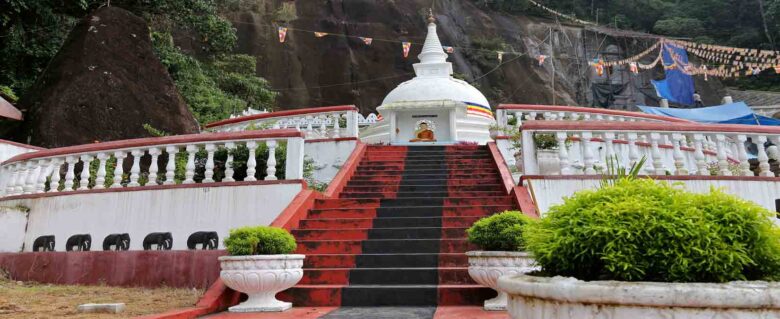13Km/ 25min
Just 25 minutes from Elpitiya, down a coastal road rich with coconut palms and sea breeze, lies the cultural heart of Sri Lanka’s folk traditions — Ambalangoda, home to the famous Traditional Mask Museum. Though modest in appearance, this space holds centuries of stories carved into vibrant wood, where demons, spirits, gods, and village characters come to life in the form of masks.
As you step inside the museum, it feels like walking into a theater where time has paused. Walls lined with color and character greet you — wide eyes, fierce fangs, long tongues, and intricately painted expressions frozen mid-dance. Some masks evoke laughter, others awe, and a few give you the chills — all intentionally crafted to stir emotion. These are not just decorations; they are tools of tradition, each with a tale to tell.
The museum introduces you to three main categories of masks: Kolam, Sanni, and Raksha. Kolam masks are whimsical and humorous, used in folk plays to depict village life, kings, queens, and tricksters. Sanni masks, on the other hand, have a deeper spiritual weight — each one represents a specific illness or affliction, used by traditional healers in exorcism rituals to “drive out” bad spirits believed to cause sickness. And then there are the fierce and flamboyant Raksha masks — dragon-faced protectors used in ceremonies to ward off evil and invite blessings.
In one corner, you may see a master artisan at work — carefully chiseling, sanding, and painting a mask from Kaduru wood, the lightweight timber traditionally used. The smell of wood and paint fills the air, as he adds strokes of fiery orange and emerald green to bring his creation to life. Watching this process makes you appreciate the patience, skill, and soul that goes into each piece.
A small adjoining shop offers souvenirs — miniature masks, hand-carved puppets, and books that explain the mythology behind them. But the real takeaway is the story. This museum isn’t just preserving Sri Lankan heritage — it’s passing it forward to curious eyes and open minds.
When you leave Ambalangoda and head back to Elpitiya, you may find your thoughts wandering to dancing demons and village tales told by firelight. The museum leaves you not just informed, but enchanted — as though one of those masks winked at you, welcoming you into a world where stories are worn on the face and passed down through generations.


